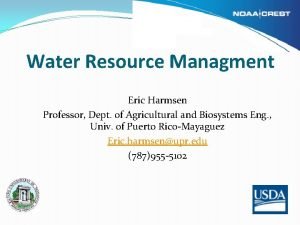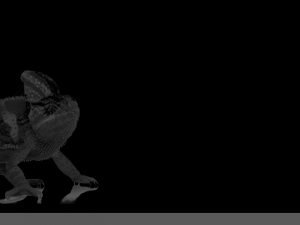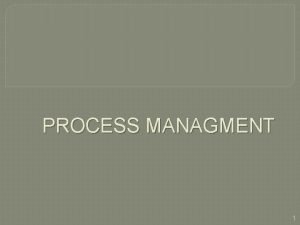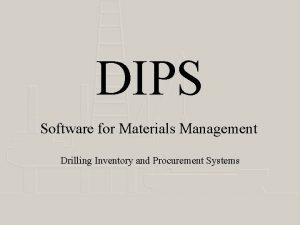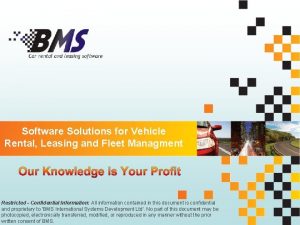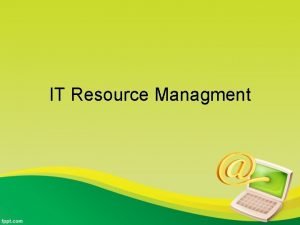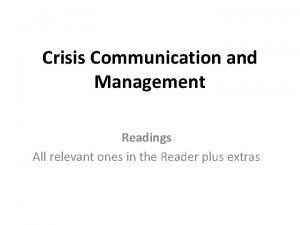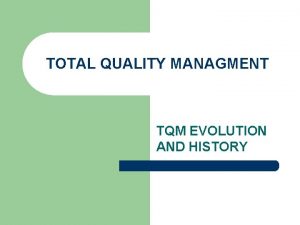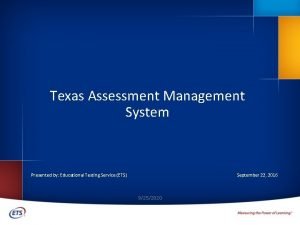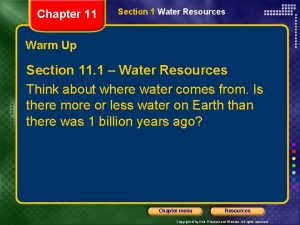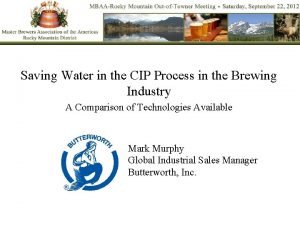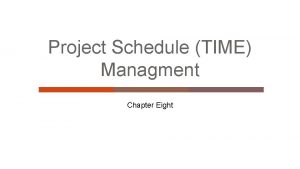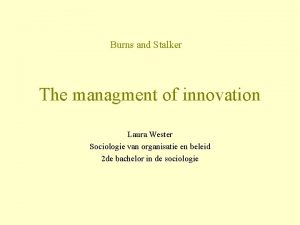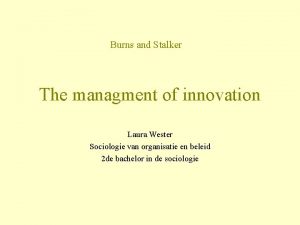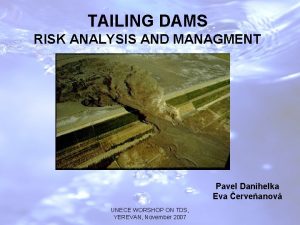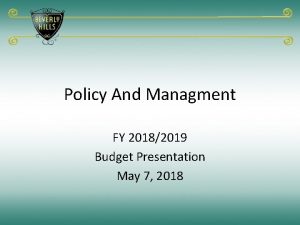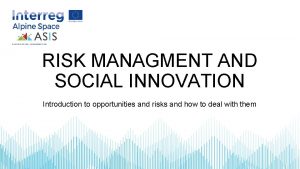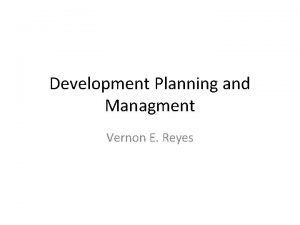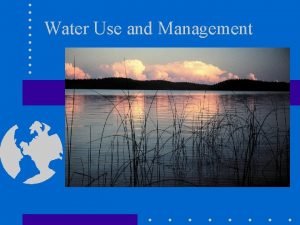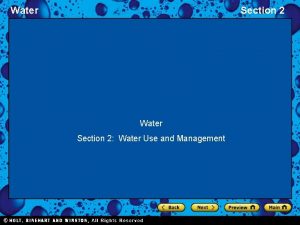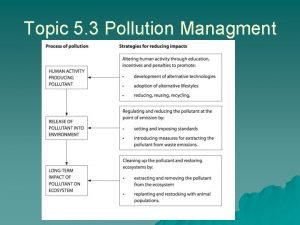CHAPTER 11 2 Water Use and Managment WATER
























- Slides: 24

CHAPTER 11 -2 Water Use and Managment

WATER USE AND MANAGEMENT • When a water supply is polluted or overused, everyone living downstream can be affected. • A shortage of clean, fresh water is a major issue • According to the World Health Organization (WHO) more than 1 billion people lack access to a clean, reliable source of fresh water • Mostly in developing countries

WATER USE AND MANAGEMENT • Most water use irrigation for agriculture • Availability of fresh water, population size/density , and economic conditions affect how people use water. • Industry water use 19% worldwide • Municipal water use 8% worldwide

RESIDENTIAL WATER USE • Average person in the USA uses about_____ • Average person in India uses only ______

RESIDENTIAL WATER USE • In the U. S. , only about ½ of residential water use is for activities inside the home, such as drinking and cooking.

RESIDENTIAL WATER USE

WATER TREATMENT • Potable: • Water treatment removes elements such as mercury, arsenic, and lead • Found in polluted water, but they can also occur naturally in groundwater.

WATER TREATMENT • Pathogen: • Pathogens are found in water contaminated by sewage or animal feces • Can be removed with water treatment. • Common water treatment method includes both:

DRINKING WATER TREATMENT

INDUSTRIAL WATER USE • Water is used to manufacture goods, to dispose of wastes, and to generate power (19% of total)

AGRICULTURAL WATER USE • Agriculture accounts for 67% of the water used in the world. • Plants require a lot of water to grow • Meat production

IRRIGATION • Irrigation: • Many different irrigation techniques are used today. • For example:

Center pivot Drip irrigation (efficiency 90– 95%) Gravity flow (efficiency 80% with low-pressure sprinkler and 90– 95% with LEPA sprinkler) Above- or below-ground (efficiency 60% and 80% with surge valves) pipes or tubes deliver water to individual plant roots. Water usually comes from an aqueduct system or a nearby river. Water usually pumped from underground and sprayed from mobile boom with sprinklers. Stepped Art Fig. 13 -18, p. 335

WATER MANAGEMENT PROJECTS • People often live in areas where surface water is inadequate. • Water management projects (such as dams) are designed to meet these needs. • Brining in water to make a dry area habitable • Creating a reservoir for drinking water • Generating electric power, which then allows people to live and grow crops in desert areas.

WATER MANAGEMENT PROJECTS • The Colorado River begins as a glacial stream in the Rocky Mountains and quickly grows larger as other streams feed into it. • So much of the river’s water is diverted that the river runs dry before it reaches the Gulf of California.


DAMS AND RESERVOIRS • Dam: • Reservoir: • Water from a reservoir can be used for flood control, drinking water, irrigation, recreation, and industry.

DAMS AND RESERVOIRS • Hydroelectric dams: • Flowing water to turn a turbine • Generates electrical energy • About 20% of the world electrical energy is generated this way.

Provides irrigation water above and below dam Flooded land destroys forests or cropland displaces people Large losses of water through evaporation Provides water for drinking Reservoir useful for recreation and fishing Can produce cheap electricity (hydropower) Reduces downstream flooding of cities and farms Deprives downstream cropland estuaries of nutrient-rich silt Risk of failure and devastating downstream flooding Disrupts migration and spawning of some fish


WATER CONSERVATION • Residential • Agricultural (Irrigation) • Industrial • Recycling of cooling water and wastewater, instead of discharging used water into a nearby river

XERISCAPING • Example: Southern California

WATER CONSERVATION AT HOME

SOLUTIONS IN FUTURE • Two possible solutions are: • Desalination • Transporting Fresh Water
 Pragwater
Pragwater Water and water and water water
Water and water and water water Web content managment
Web content managment Process managment
Process managment Dips software
Dips software User managment
User managment Cherwell school reviews
Cherwell school reviews Records managment 201
Records managment 201 Network managment
Network managment Important of resources management
Important of resources management Vehicle rental software solutions
Vehicle rental software solutions What is resource managment
What is resource managment Crisis managment plan
Crisis managment plan History of total quality management
History of total quality management Total quality managment
Total quality managment Texas assessment managment system
Texas assessment managment system Lap id kosten
Lap id kosten Chapter 11 section 2 water use and management
Chapter 11 section 2 water use and management Yesterday
Yesterday Class 8 english chapter 7 water water everywhere
Class 8 english chapter 7 water water everywhere Chapter 9 surface water answer key
Chapter 9 surface water answer key Dock water
Dock water How to use less water in cip
How to use less water in cip The term geologists use for underground water is
The term geologists use for underground water is A mushroom and a humpback whale are alike because both are
A mushroom and a humpback whale are alike because both are
